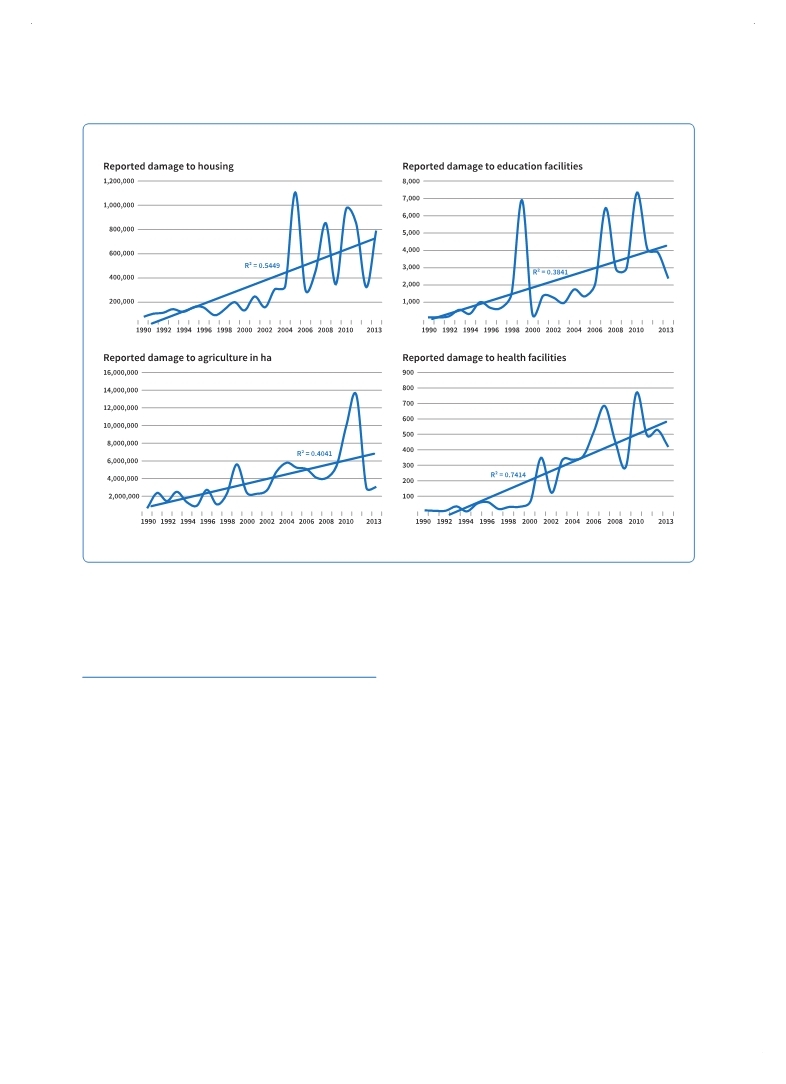 |
Global Assessment Report on Disaster Risk Reduction 2015
Making development sustainable: The future of disaster risk management |
 |
Global Assessment Report on Disaster Risk Reduction 2015
Making development sustainable: The future of disaster risk management |
|
|

96
Part I - Chapter 4
(Source: UNISDR with data from national loss databases.)
Figure 4.8 Reported damage from extensive disasters to housing, education and health facilities, and agricultural production (65 countries, 2 states)
4.2 Undermining development
capacities and gains
Losses from extensive disasters are responsible for most disaster morbidity and displacement, and represent an ongoing erosion of development assets. This presents a particular challenge to the achievement of development goals in areas and regions that already experience social inequality and exclusion.
Extensive risk particularly challenges the achievement of development goals in areas and regions already characterized by social inequality and exclusion. The deficit of infrastructure in these areas is already an underlying driver of vulnerability and disaster risk and weakens resilience. The loss of this infrastructure in
disasters further aggravates the situation, generating a vicious cycle. For example, a deficit of primary health facilities increases the vulnerability of low-income households that suffer flooding. Households with poor health are likely to be less resilient to disaster loss, and the damage or destruction of those facilities in disasters further compounds the problem.
The economic value of these social assets is significant. While the economic losses from intensive disasters are usually evaluated by governments or international organizations and insured losses are assessed by the insurance industry, the economic cost of extensive risk is largely unaccounted for and ultimately reabsorbed into poverty. Estimates of the cost of those unreported disasters highlight a growing and largely unknown
|
 
Page 1Page 10Page 20Page 30Page 40Page 50Page 60Page 70Page 80Page 86Page 87Page 88Page 89Page 90Page 91Page 92Page 93Page 94Page 95Page 96Page 97->Page 98Page 99Page 100Page 101Page 102Page 103Page 104Page 105Page 106Page 107Page 108Page 109Page 110Page 120Page 130Page 140Page 150Page 160Page 170Page 180Page 190Page 200Page 210Page 220Page 230Page 240Page 250Page 260Page 270Page 280Page 290Page 300Page 310
|
|
 
|
 
|
